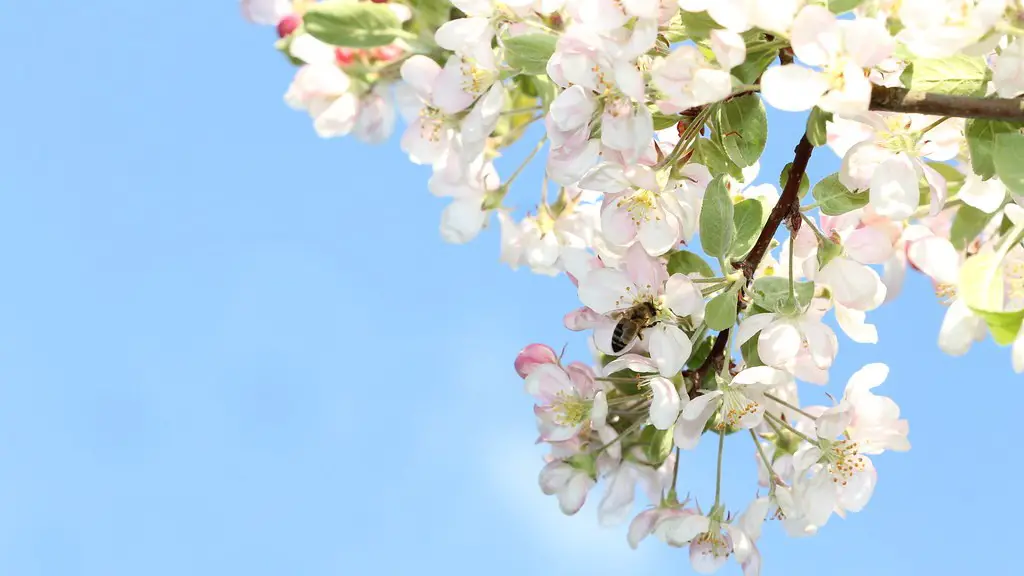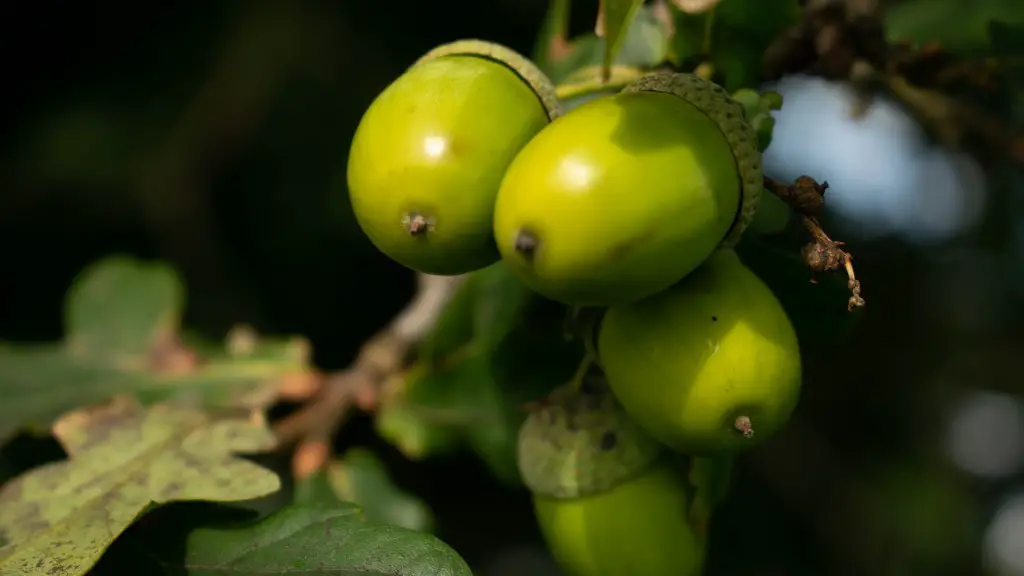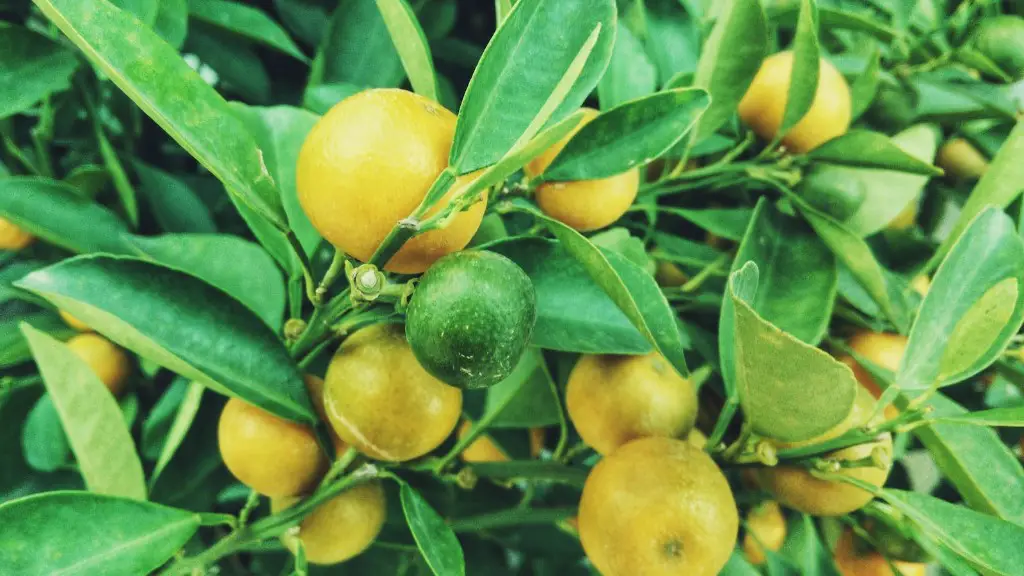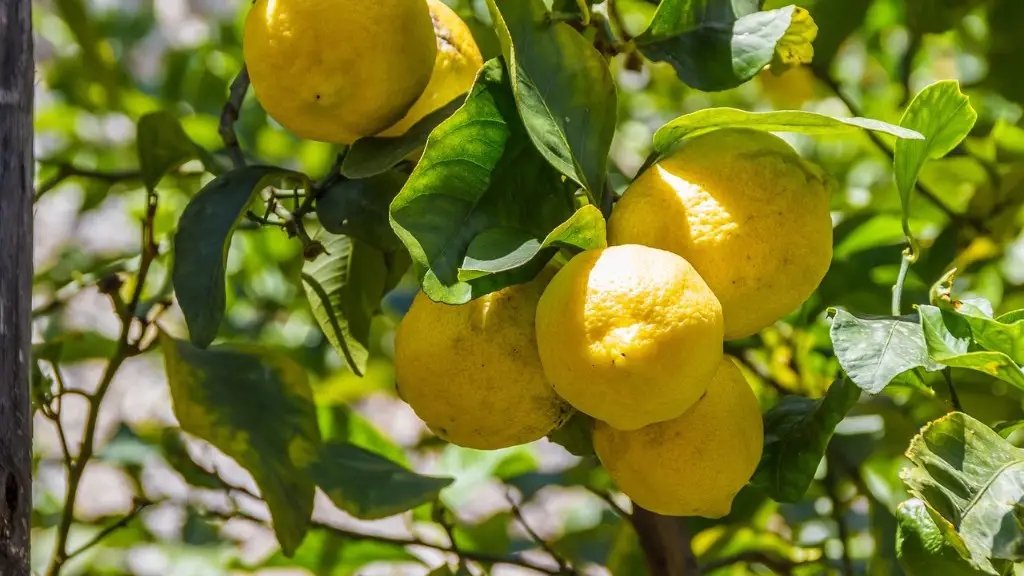The discoloration of leaves on an apple tree is a normal sign of apple tree aging. Apple leaves turning brown occurs for a variety of reasons, such as drought stress, fungal infections, or insect damage. Among the reasons for browning leaves is a type of fungus called Apple Scab, which causes the apple leaves to tag and turn brown. A lack of necessary nutrients can also contribute to leaves turning brown, either in spots or all over the leaf. In severe cases, leaves may become encrusted with brown spots and die.
In some cases, apple trees may produce an overload of fruit and these excess apples take a lot of energy from the tree. When the tree does not get adequate energy, it may respond by discoloring its leaves, turning them yellow or brown. By doing this, the tree will conserve energy and its remaining fruit will be healthier. Excess nitrogen can also cause leaves to turn yellow and gradually develop brown spots.
When leaves are dry, brown patches may form; this is known as drought stress. During the summer months, apple trees may not have enough water to keep its leaves healthy and looking green. If drought persists, the leaves will turn brown, eventually dropping off the tree.
Extreme heat can also result in browning leaves. As the temperature rises, it increases the speed of the natural process of respiration, as the tree needs more oxygen to create energy. This results in the apple tree not being able to properly chlorophyll its leaves and they will eventually turn brown.
Apple trees are prone to insect infestations. These insects feed on the sap of the tree and the leaves, their droppings and saliva leave a residue that can cause the leaves to turn brown. These insects can also attack the fruits, leading to discoloration and illness in the tree.
Apple trees are also vulnerable to fungal infections; these fungi feed on the sugars in the leaves and cause them to turn brown or black. Some fungi can also cause the leaves to fall off the tree. These infections are very difficult to treat and can cause the tree to die if left untreated.
In summary, the discoloration of leaves on an apple tree can be caused by a variety of reasons, such as drought stress, fungal infections, insect damage, lack of necessary nutrients, an overload of fruit, or extreme temperatures. Therefore, it is important to ensure the tree is properly cared for by providing it with adequate water, nutrition, and protection from insects in order to keep the leaves healthy.
Nutrients and Apple Trees
Nutrients are essential for maintaining the health and vigorous growth of an apple tree. When a tree lacks necessary nutrients, the leaves may turn brown either in spots or all over. In order to ensure a tree receives all of the necessary nutrients, it is important to use a fertilizer that is specially formulated for apple trees and to apply it regularly.
Regularly testing the soil for pH can help to determine if there is an imbalance of nutrients or not. In cases where the soil is deficient in nutrients, a soil amendment or compost can be used to help bring the levels up to a suitable range.
In addition to fertilizing and soil amendments, planting companion plants such as legumes can also be beneficial for apple trees. Legumes contain nitrogen fixing bacteria that can enrich the soil and provide nutrients for the apple tree.
Furthermore, various mulches can be used around apple trees to aid with moisture retention and protecting the soil from degradation. The mulch can also provide an additional source of nutrition for the tree.
Overall, providing adequate nutrition for an apple tree is key to preventing the discoloration of leaves. Regular soil testing and fertilizer applications, along with the use of companion plants and mulch, can help ensure a tree’s health and leaves remain green and healthy.
Controlling Apple Tree Pests
Apple trees can be vulnerable to pests, particularly during the warm months when they become most active. There are various pests that can feed on the leaves of an apple tree, leaving a residue that can cause the leaves to turn brown.
In order to control pests, it is important to monitor the tree regularly and use preventative measures such as insecticidal labels, or physically removing egg sacs and larvae with a garden hose spraying. Pruning an apple tree to keep it within a manageable size can also help to reduce the chance of infestations.
Attracting natural predators like birds, lacewings, and ladybugs can also be an effective method of controlling pests. Birdhouses and insect hotels can be used to help attract these natural predators.
Furthermore, removing damaged, diseased, or infected branches and leaves can also help reduce the chance of infestations. If the tree has a heavy load of fruit, it is important to thin it out to avoid overwhelming the tree. Lastly, encouraging a healthy and balanced microbiome in the soil surrounding the tree with various beneficial fungi and non-invasive. beneficial bacteria can help to keep pests in check.
In conclusion, apple trees are susceptible to pests, which can feed on the leaves and the fruits, leading to discoloration and illness in the tree. To combat pests, it is important to use preventative measures such as insecticides, physically removing egg sacs and larvae, pruning, and attracting natural predators. Removing damaged, diseased, or infected branches and leaves, thinning the tree’s fruit load, and creating a healthy soil microbiome can also help to reduce the likelihood of infestations.
Treating Fungal Infections
Fungal infections can be very damaging to apple trees, leading to leaves turning brown and eventually, dropping off the tree. Apple Scab is a type of fungus that causes the leaves to tag and turn brown.
In order to prevent and combat fungal infections, it is important to carefully monitor the tree for signs such as discoloration or lesions on the leaves. Pruning and thinning the tree’s fruit load can help to reduce the moisture levels, making it less likely for the fungus to thrive. Applying fungicides in the spring may also help reduce the development of fungal infections.
In addition to fungicides, it is important to take measures to reduce the chance of fungal infections, such as avoiding overhead watering and using a preventative spay of copper fungicides. Planting companion plants, such as marigolds, that may help discourage fungal infections can also be beneficial.
Furthermore, removing fallen leaves and fruits can help to mitigate the risk of fungal infections spreading. If a tree has a severe infection, it may be beneficial to remove it entirely to stop the spread of the fungus.
Overall, a fungal infection can be very damaging for an apple tree and its surrounding environment. To prevent and combat fungal infections, it is important to take preventative measures such as pruning, fungicides, planting companion plants, and avoiding overhead watering. Removing fallen leaves and fruits and removing severely infected trees can also help stop the spread of the fungus.
Monitoring Apple Tree Health
Monitoring the health of an apple tree is important for ensuring it produces plenty of healthy and delicious fruit. If a tree’s leaves are discolored, or it does not produce as much fruit as it should, it may be a sign of a problem.
Regular monitoring of the tree’s leaves and fruits can help to identify any potential issues, such as discoloration of leaves or spots on the fruits. It is also important to check the tree’s stems and buds for signs of disease or insect damage.
In addition to visually inspecting the tree, soil testing can be used to determine if the tree lacks any necessary nutrients. pH testing can also be a useful indicator of whether or not the soil is healthy.
Furthermore, regularly testing for pests can help to identify and manage infestations before they become too severe. Checking for fungal infections can also help to identify the early signs of a problem and allow for treatment before the tree is severely damaged.
Overall, monitoring the health of an apple tree is key to ensuring it produces healthy and delicious fruit. Regularly inspecting the leaves, buds, and fruits, along with soil and pest tests, can help to identify any potential issues with the tree early and allow for proper treatment.





